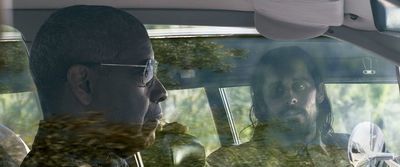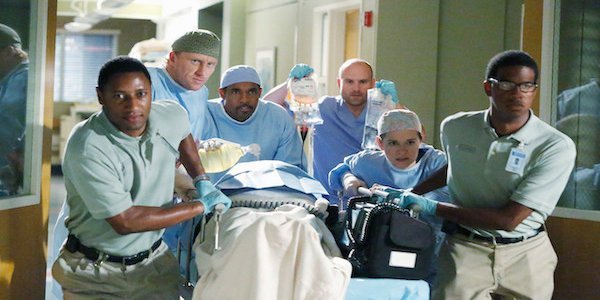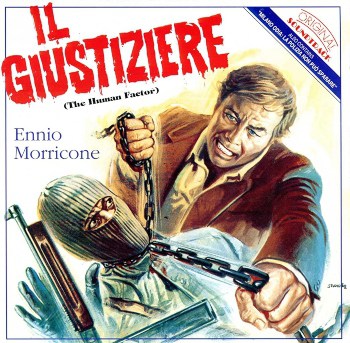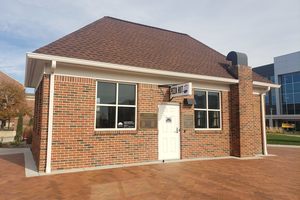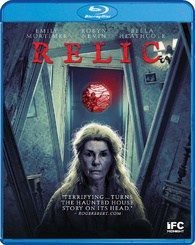Drake Doremus Talks ‘Endings, Beginnings’ and Love at First Sight with Sebastian Stan
Since making waves in 2011 with his Sundance Grand Jury Prize winner Like Crazy, filmmaker Drake Doremus has carved out a remarkable niche for himself in the American indie scene. He has a knack for elegantly capturing intimacy onscreen, as shown with such films as Breathe In and Equals. In addition, he recently dipped his toes into the documentary world as a producer on the heartbreakingly excellent Anton Yelchin tribute Love, Antosha.
After making a second foray into the world of science fiction with 2018’s Zoe, Doremus returns to the familiar realm of modern romantic trials and tribulations with Endings, Beginnings. A visually rich character study, the film covers a year in the life of ennui-stricken thirty-something Daphne (Shailene Woodley), who finds herself becoming romantically involved with two very different men (Jamie Dornan and Sebastian Stan).
Endings, Beginnings is the closest thing to Like Crazy that Doremus has made in the decade since. The film does for love triangles what the former did for long-distance relationships, introspectively deconstructing a familiar trope into something with a more emotionally honest, if distinctively somber, shape.
I spoke with the filmmaker about his particular approach to storytelling and how it’s evolved after over a decade in the director’s seat. Here is our conversation:
Endings, Beginnings feels so authentic and natural in its performances. What is your approach to both casting and working with actors? How do you get that authenticity?
It’s a pretty sensitive process. I’m not as interested in auditioning people, really. To be honest, I kind of stopped doing that years ago. I’m more interested in spending hours looking under the hood, having conversations and really getting a sense of somebody and who they really are, in tandem with really kind of researching their catalog and watching them. Watching their habits, watching the different things they do.
I’m just trying to find people who can hide the strings, really. People that can really delve into the process but also make it look effortless and like there is no process. Right off the bat, I felt that way about Sebastian. I was kind of obsessed with working with him for a while and thought he was just so special, and then it was kind of love at first sight. We got together and spent three hours — it was just this really beautiful, deep conversation where we emptied the well.
Then Jamie and I did a Hugo Boss perfume ad together a couple of years ago, and I just thought he was really kind and subtle and lovely and that he’d be perfect for Jack. And then Shailene, over the years we had talked about doing some things and she was just kind of at the right place, at the right time in her life to embody the spirituality of this character. So it was good timing, really. That’s what it kind of is always with these movies; it’s trying to find the right person at the right time of their life so that it all lines up. So that it can be really organic and really honest.
Was there a particular performance of Sebastian’s that made you think, ‘I need to work with this guy’?
I mean, I, Tonya for sure. I was like, ‘Man, this guy’s a chameleon.’ And then you get to spend time with him and you realize how little of him is really in that role and on that screen, and you go, “Wow.” There are only a few actors that I can even think of that are able to do things like that. I’m in awe of how he’s able to control his instrument and how he’s able to completely change it. He’s not really a character actor, he’s not really a leading man; he’s something totally different, something even above that, you know? It kind of blows my mind.

Drake Doremus and Sebastian Stan on the set of ‘Endings, Beginnings’ (photo courtesy of Shailene Woodley)
So, of the three leads, who came on first?
I think we cast Sebastian first and then Jamie second and then Shailene was last, actually.
Oh, okay that’s interesting.
Yeah, that’s how it happened.
I also wanted to talk to you about your writing process. I’ve read some of your other interviews and it sounds like you do things a little differently.
Yeah, we have an outline instead of a full script. This one was really detailed, it was 70 pages, and it’s filled with plot points, character stuff, a lot of subtext, a lot of objectives, a kind of beginning, middle, and end of each scene, and then there’s a good amount of dialogue here and there. But it’s more about the meat of the scene, the emotionality of the scene.
The things that a conventional script is concerned with, action and dialogue, is something that I am more interested in last. I’m more interested in what fundamental character dynamics are in the scene and working backward. So we kind of start with that and then we go from there. The dialogue’s kind of the last thing we add. It gives us an opportunity to find different ways of exploring something every time, so everything’s really alive, nothing feels stale or like we’re going in circles. That’s kind of the feeling I’m after in every scene.
You had a co-author on this script.
Yes.
Do you normally collaborate on your scripts?
Usually, yeah. I love that. I’ve worked with Ben York Jones on four movies and [Endings, Beginnings co-writer] Jardine Libaire is a wonderful novelist who wrote a book called White Fur that I love. She felt like the right fit for this.
So with your outlining process, do you find that things evolve over the course of shooting?
It’s totally evolving. Every day is a surprise. Every day is something different. Nothing happens exactly the way you think it’s going to and that’s kind of the point. I’m kind of obsessed with happy accidents, obsessed with things constantly evolving and changing. It’s like a puzzle. It’s just constantly evolving and that’s what keeps it alive; it’s like an organism. At the beginning of the process, it’s like an idea, but then its evolution is what makes it so special and exciting to follow.
How much of that evolution continues into the editing room, for you? By the time you get to that point, do you have a very clear idea of where things are going, or is it still evolving?
It’s still evolving. There are definitely three phases of writing on these. I’m rewriting the movie in the edit room, definitely changing things around. I mean there are fourteen or fifteen scenes that I thought would be really important in the outline that just didn’t make it in the movie even.
I would say the most excruciating part of doing a movie like this is that first month and a half of editing because there are so many choices and there’s so much footage. It’s just kind of a mess until it’s, you know — things don’t work at all until they start to work. And that gap is always kind of excruciating, but it’s fun because once it starts to work it’s like, wow, I can’t believe that we were able to get there with all that. With all those options, we ended up with that simple little scene.
Does your unique writing process make it harder for you to get projects made? Or, now that you’ve established yourself, are people more willing to come on board even though you don’t work from a typical screenplay?
I think it’s always hard. Thankfully, to be honest with you, the currency is finding exciting actors that excite me but also excite a financier. That’s sort of the thing that I’m grateful for. And because I’ve done it enough times now, the outline isn’t as shocking or weird to actors. They can see some of my films and watch the performances and see how that translates, and it’s a lot easier for them to imagine themselves being comfortable in that situation and environment.
I’ve had a lot of different financiers, and for some of them it’s a little bit bizarre, but I think they can look to how we’ve done it in the past and see that it does work and that there’s a way to do it successfully. So I’m very grateful that I’ve been able to have work to demonstrate that — a proof of concept, essentially.
Endings, Beginnings will be released April 17th on digital and May 1st on VOD.

